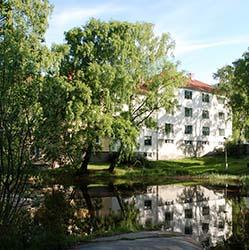PhD project: Regenerative Placemaking
Making places for collective life and a common future
Architects, urban designers and planners have long understood the power of public spaces as crucial physical nodes in the experience and function of the urban fabric and the lives lived within it. As our world becomes more populous and urbanizes, and cities expand, densify and become more culturally diverse, the need for more and new types of public spaces will arguably increase.
Alongside this urbanization and globalization, there is a growing insight that in order for our civilization to continue survive and prosper we need to re-evaluate the role urban areas and activities play in the health of ecosystems that we and other species depend upon, i.e. to become more 'sustainable'. It is therefore essential that we question what role public spaces can play in developing the understanding of and transition to 'sustainable development'. In other words: What is a sustainable public space and how do we, as spatial designers, support the development of such a place?
The question of what a 'sustainable public space' is and how one might design or plan for their most effective use is imminently tied up with the questions of "What do we mean by sustainability?" and "What do we mean by city?" identified by FORMAS as the two primary knowledge gaps in research being conducted on "Sustainable urban development in Sweden". This dissertation will contribute to these questions through the exploration of an emerging theory and practice called regenerative design and development, which calls into question the reigning reductionist paradigm of sustainable design and development for the built environment.
Regenerative design
Regenerative design is a system-based approach which advocates developing place-based strategies with a focus on enhancing fruitful relationships between the key principles and needs of ecosystems and society within their glocal context. In particular, it aims to enhance the regeneration of resources in society and improve quality of life through reconceptualising our role within ecosystems and resource cycles.
“Regenerative Design…introduces into Ecological Design at least two additional streams—the Science or Art of Place, and the science of living systems. Regeneration is far more than simple renewal or restoration. Definitions of the word ‘regenerate’ include three key ideas: a radical change for the better; creation of a new spirit; returning energy to the source” (Mang, Pamela 2001)
Integration of placemaking and resource cycles
The notion of sustainability and the notion of city will be problematized within the field of spatial design through the investigation and development of regenerative design principles and their potential to develop new types of urban public spaces. More specifically: How can the spatial designer affect and support public spaces that encourage regenerative cycles in communities and their relationship to ecosystems and resources?
To answer this, the dissertation will examine and develop practical and theoretical tools for architects, urban designers and planners to help inform the potential for the integration of placemaking and regenerative resource cycles, particularly waste-to-resource cycles. It will thereby also contribute to the discussion on if and how public spaces can, or cannot, contribute to the EU directive targets for increasing re-use and recycling to be achieved by 2020.






